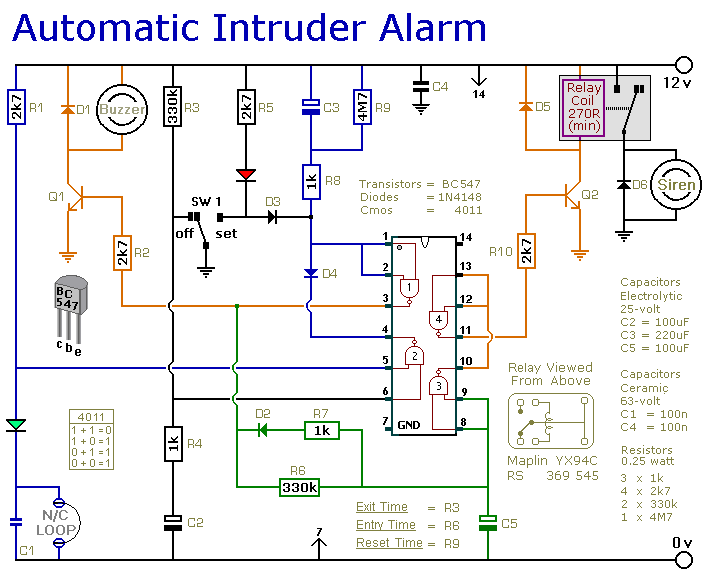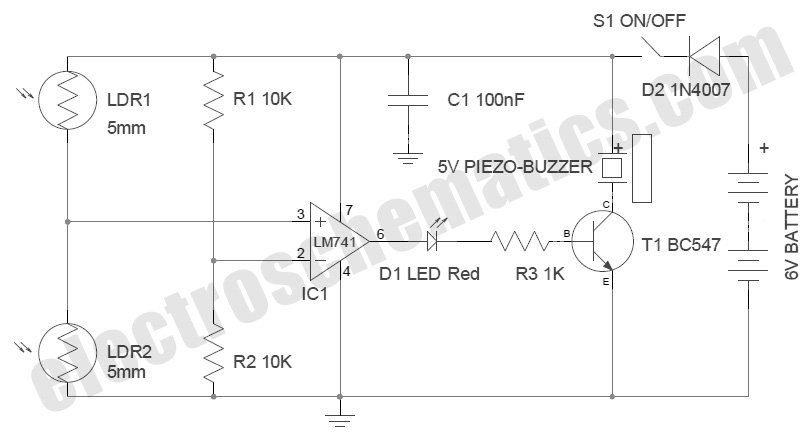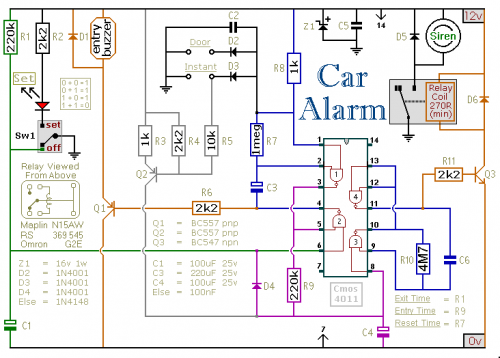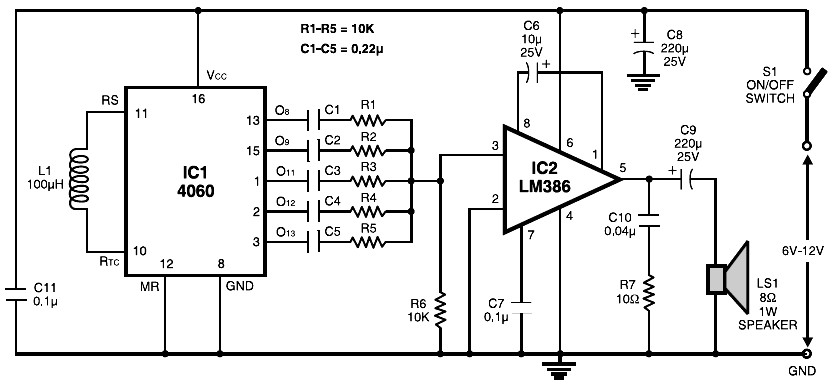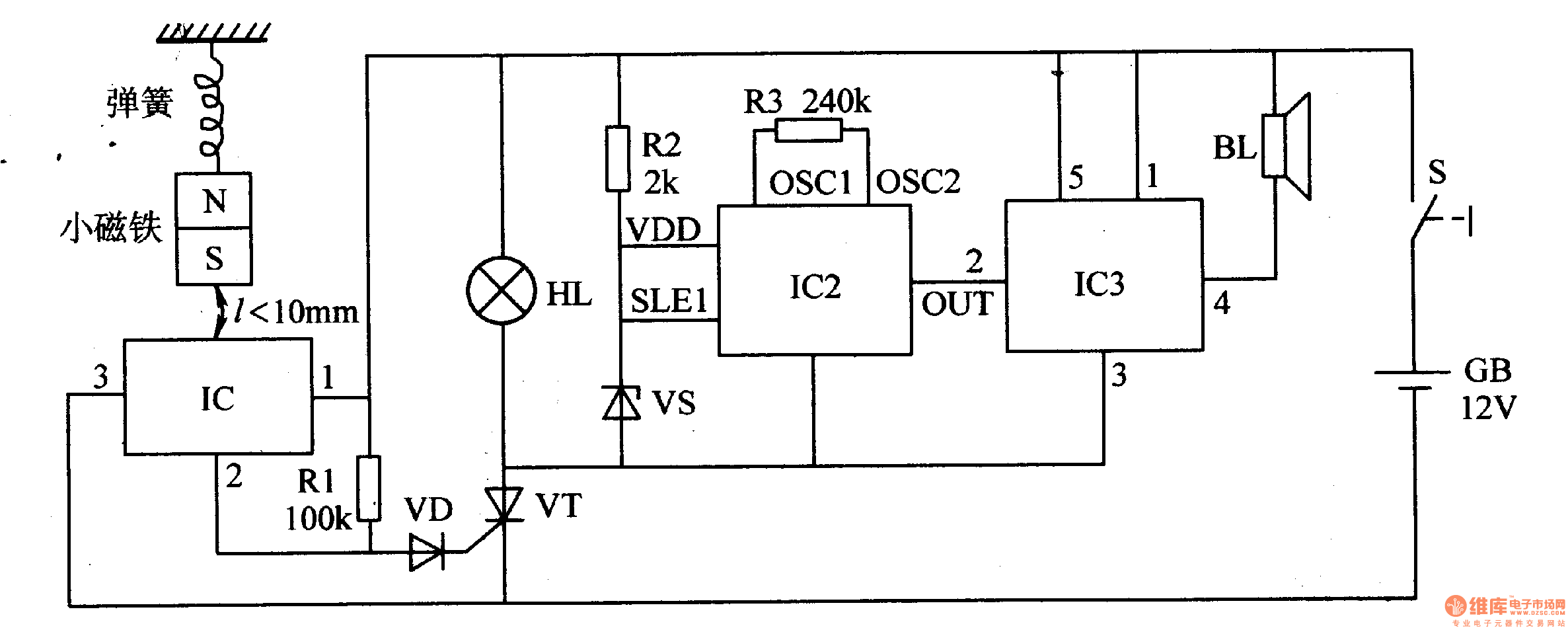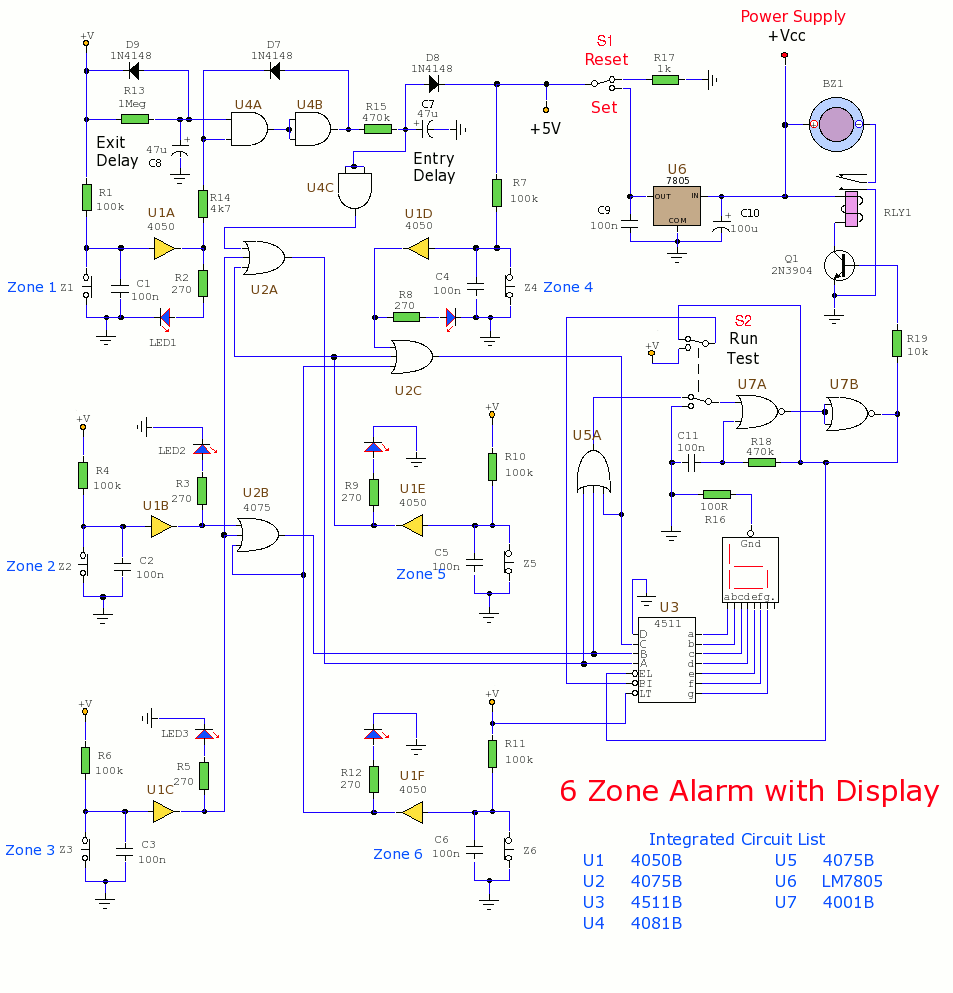
A Cmos 4060 Burglar Alarm
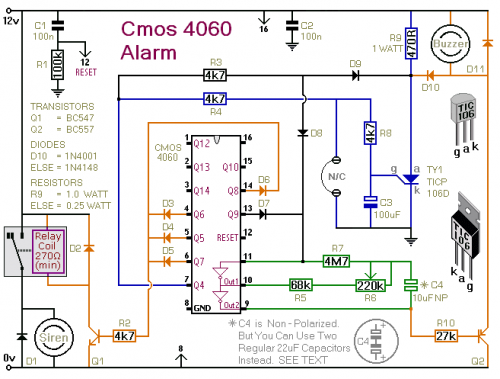
This is a single-zone alarm system featuring automatic exit, entry, and siren cut-off timers. It accommodates various types of normally-closed input devices, including magnetic reed contacts, foil tape, passive infrared sensors (PIRs), and more. Additionally, it is straightforward to incorporate a normally-open trigger. When the alarm is activated, the siren will sound for a predetermined duration before automatically turning off and remaining inactive. The alarm will not reactivate after this period. This circuit serves as an effective introduction to the CMOS 4060 and the silicon-controlled rectifier (SCR).
The single-zone alarm system employs a CMOS 4060 integrated circuit, which functions as a timer and oscillator. The CMOS 4060 is capable of generating precise timing intervals, which are essential for the automatic exit and entry features of the alarm. The configuration of the circuit typically includes resistors and capacitors that set the timing for the siren activation and deactivation.
Input devices are connected to the alarm system through normally-closed contacts. These devices are designed to trigger the alarm when a breach is detected. The alarm can also accept normally-open triggers, providing flexibility in the types of sensors that can be used. The system is designed to ensure that once the siren has been activated and has completed its sounding duration, it will not reactivate until a manual reset is performed. This feature is particularly useful in preventing false alarms and ensuring that the system remains secure.
The siren cut-off timer is critical in determining how long the siren will sound once the alarm is triggered. This timer can be adjusted based on the specific requirements of the installation, allowing for customization according to user preference or environment. The use of an SCR in the circuit allows for efficient control of the siren, enabling it to handle high current loads without requiring extensive additional components.
Overall, this single-zone alarm system provides a reliable and efficient solution for basic security needs, while also serving as a practical introduction to key electronic components and their applications in alarm circuits.This is a single zone alarm - with automatic exit, entry and siren cut-off timers. It will accommodate all the usual types of normally-closed input devices - such as magnetic reed contacts, foil tape, PIRs etc. But it`s easy to add a normally-open trigger. When the alarm is activated - the siren will sound for a fixed length of time. Then it will switch off - and remain off. The alarm will not reactivate. The Circuit offers a good introduction to the Cmos 4060 and the SCR 🔗 External reference
The single-zone alarm system employs a CMOS 4060 integrated circuit, which functions as a timer and oscillator. The CMOS 4060 is capable of generating precise timing intervals, which are essential for the automatic exit and entry features of the alarm. The configuration of the circuit typically includes resistors and capacitors that set the timing for the siren activation and deactivation.
Input devices are connected to the alarm system through normally-closed contacts. These devices are designed to trigger the alarm when a breach is detected. The alarm can also accept normally-open triggers, providing flexibility in the types of sensors that can be used. The system is designed to ensure that once the siren has been activated and has completed its sounding duration, it will not reactivate until a manual reset is performed. This feature is particularly useful in preventing false alarms and ensuring that the system remains secure.
The siren cut-off timer is critical in determining how long the siren will sound once the alarm is triggered. This timer can be adjusted based on the specific requirements of the installation, allowing for customization according to user preference or environment. The use of an SCR in the circuit allows for efficient control of the siren, enabling it to handle high current loads without requiring extensive additional components.
Overall, this single-zone alarm system provides a reliable and efficient solution for basic security needs, while also serving as a practical introduction to key electronic components and their applications in alarm circuits.This is a single zone alarm - with automatic exit, entry and siren cut-off timers. It will accommodate all the usual types of normally-closed input devices - such as magnetic reed contacts, foil tape, PIRs etc. But it`s easy to add a normally-open trigger. When the alarm is activated - the siren will sound for a fixed length of time. Then it will switch off - and remain off. The alarm will not reactivate. The Circuit offers a good introduction to the Cmos 4060 and the SCR 🔗 External reference
